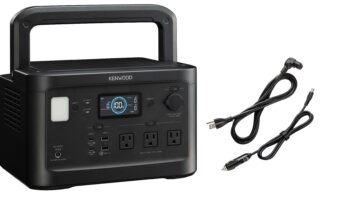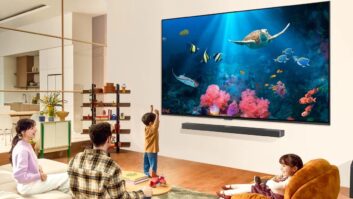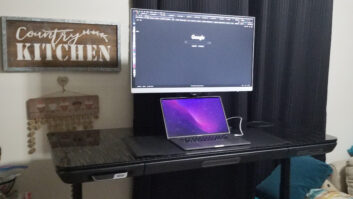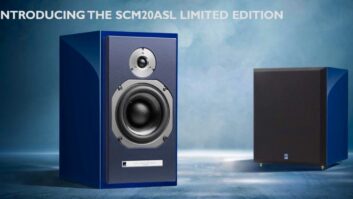NEW YORK –
Upbeat assessments of 3DTV were
the rule rather than the exception during the “3DTV In
A Connected World” panel at NewBay Media’s Connected
TV and 3D event, here, at the Roosevelt Hotel
on May 24.
The panel, moderated by TWICE executive editor
Greg Tarr, featured participants from several industries
involved in the 3DTV rollout: Kris Brown, worldwide
HD marketing VP of Warner Home Video; Bryan
Burns, strategic business and development VP, ESPN;
Steven Corda, North America business development
VP, SES World Skies; Steve Koenig, industry analysis
director, Consumer Electronics Association (CEA);
and Dan Schinasi, senior marketing manager, HDTV
product planning of Samsung Visual Display Product
Group.
Their optimism echoed the results from the Digital
Entertainment Group (DEG) study of 3DTV owners released
at the conference earlier today which gave the
format good reviews.
Brown, who is also chairman of the DEG 3D Working
Group, said, “This is an irreversible trend. Early
adopters are very satisfied. That will spread to friends
and neighbors. With more programming on Blu-ray
and from ESPN and other networks [3DTV] adoption
rates will go even higher.”
Schinasi said that in Samsung’s experience with
3DTV vs. other technologies, “Consumers have been positive” and the acceptance of 3D “has been as strong
as other emerging technologies” at the same point of
their introduction.
CEA’s Koenig said the DEG study was not a surprise.
“It is similar to our studies. I agree completely that there
has been a positive signal from the marketplace.” He added
that consumers have had an enthusiastic response
with a modest amount of content and that with more programming
there will be “a lot more positive outcomes to
come.”
Burns said that from ESPN’s vantage point there are
more “3D-enabled sets now … they have rolled out more
rapidly than when HDTV was introduced which has us
excited.”
When it comes to HDTV Burns said that “Seeing is believing.”
In viewing 3DTV for the first time in comparison
with HDTV, “The 3D experience is more impressive …
consumers are more taken aback” by 3D programming.
Corda of SES World Skies, that transports content to
cable providers via satellite, said the success of 3DTV “is
all about content at this stage” and that there should be
“50 3D stations” available on U.S. cable systems by 2015.
While everyone was optimistic about the acceptance
of 3DTV when discussing a Quixel Research estimate of
6.2 million 3DTV unit sales for 2011, there was a little
pushback by Koenig of CEA. “We issue our estimates
in January and July and things do change quickly. But it
may not go to 6 million this year. That is a number we are
looking at for 2012.”
And the oft-mentioned issue of 3D glasses was discussed.
Burns noted that when consumers watched
3DTV in Monday through Friday tests conducted by
ESPN during last year’s World Cup, “When you wear
them enough it is not an issue. In the beginning it may be
an impediment but then they get used to it.”
Brown quipped, “I completely agree. [Consumers] wear them in exchange for a totally excellent experience.”
And both Corda and Schinasi commented that there
are ongoing attempts by designer sunglasses makers
and manufacturers to come up with more stylish efforts
and make them fashion items.
As far as an industry standard, CEA is working on one
based on three approaches which will be published in
October for comments, according to Koenig.
He said the CEA’s position is “standards expedite the
development of the marketplace,” and that it is not too
late for the industry to come up with a unified standard.
When asked if the battle between active-shutter and
passive 3D glasses constitutes a format war, Koenig disagreed.
“This is akin to plasma vs. LCD [HD] TVs. They
provide consumers options.”
However Samsung’s Schinasi, whose company backs
active-shutter glasses, said, “The eyewear may be identical
but the technology is demonstrably different,” which
is why his company backs the active format.
(NewBay Media, which ran the event, is the parent
company of TWICE.)













